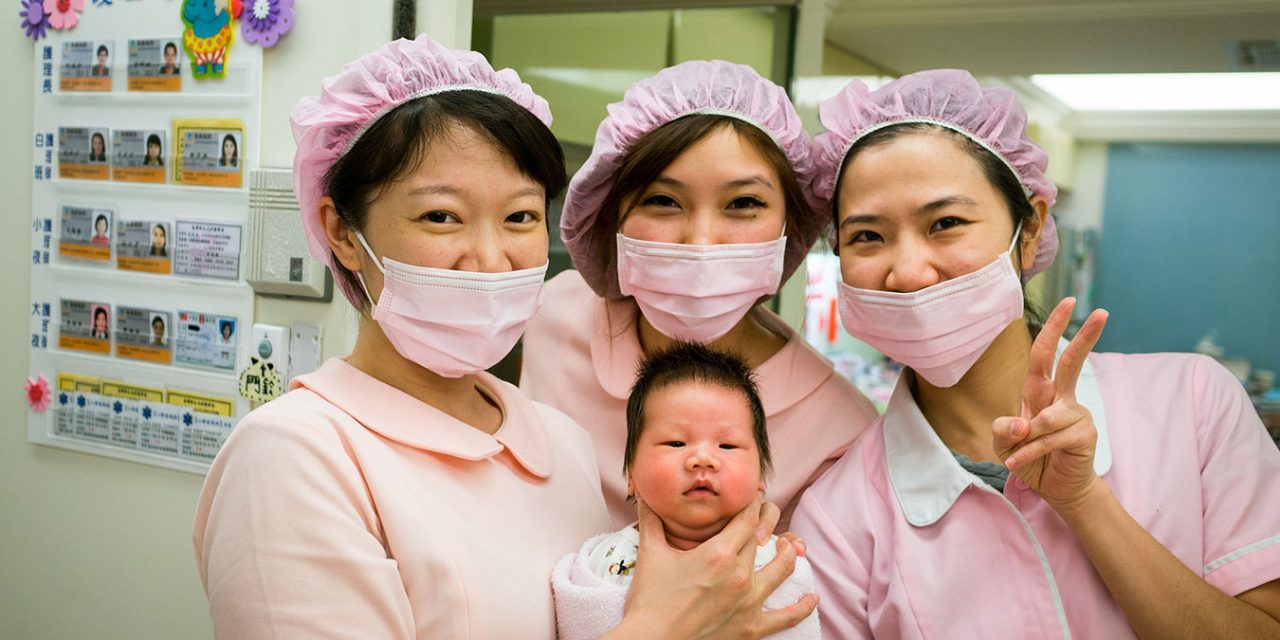Are We Off Track to Achieve SDG3 by 2030?
The UN admits that progress in achieving good health for all in every corner of the world has been uneven. There is a 31-year gap between countries with the highest and lowest life expectancies and many people are still being left behind.
However, Singer pointed out that the SDG period runs from 2015 to 2030 and that most of the data the WHO is working with is only from 2-3 years of that period. We need to be patient and not jump to early conclusions. “We really just have to think about this as the first lap of a five-lap race, we are just 3 years into a 15-year period,” said Singer.
But there have also been some historical advances in some areas of health care. For example, over the past 40 years, child mortality of under five-year-olds has been cut by about three quarters.
Although the mortality of new-born babies, that is within the first 30 days of a child’s life, has proven much more difficult to reduce. This is because new-born babies present a different set of problems and require a different set of interventions.
Singer explained that with new-borns, there are many issues that need to be looked at before, during and immediately after birth. Often countries with weaker health systems will not be able to save a child if there are complications during the latter stages of pregnancy or during birth. Much also depends on the health of the mother. “So, there is no one silver bullet, there’s no one magic cause,” said Singer.

Nurture – Not Just Survival
In the past, explained Singer, there has been too much focus on survival in women’s and particularly children’s health and instead, we should think about the importance of children being able to thrive.
For a child to reach their full potential, much depends on how it is treated from conception through the first years of life until they are three years old. Early on, good nutrition and responsive parenting and stimulation of the child and later on early learning, as well as things many people may take for granted such as protection from violence and chemical and environmental pollutants.
“If you do not foster the development of that child in that period, that child may never catch up and you’re creating huge differences in human capital and talent,” Singer explained.
HIV, Malaria, and TB
Another area of huge progress has been the fight against infectious diseases like HIV, malaria, and tuberculosis. The use of antiretroviral drugs has seen a massive drop in the number of people dying from HIV. The number of people infected with HIV also declined from 0.40 per 1,000 uninfected people in 2005 to 0.26 in 2016.
While more cases of Malaria were reported in 2016 than in 2013, more and more countries are moving towards the complete eradication of the disease and in 2016 Sri Lanka and Kyrgyzstan were pronounced malaria free.

The Global Fund
Key to progress in fighting these diseases was the foundation by the WHO of the Global Fund in 2002. The Global Fund is a public-private partnership and is the world’s biggest financier of prevention, care, and treatment programs for HIV/AIDS, malaria and TB.
The Global Fund has already saved 27 million lives from these diseases and is seeking another 14 billion dollars this year to save an additional 16 million lives. In order to save these lives, data must first be collected and then actions triggered, and therefore the Global Fund needs to work together with the SDGs and the WHO to make sure money is spent in the right places.
“The Global Fund is a fantastic example of focussed and triggered actions that have had a huge impact on these three diseases where low and middle-income countries so disproportionately bear the burden of HIV, malaria, and tuberculosis,” said Singer.
To Ensure Health for All, SDGs Must Work Together
When he was President of South Africa, Nelson Mandela, in one of his many speeches about the AIDS epidemic facing the country, said that as well as giving people medicine, you must also make sure people have enough to eat. And so, issues such as nutrition, poverty, and access to clean water and sanitation are as important as providing healthcare if someone is to enjoy a healthy life.
“What he [Mandela] was trying to capture there, is that broader issues of housing and poverty have extremely important effects on health and it’s not just a matter of health interventions alone,” said Singer.
Universal Health Coverage for All
While aid from the WHO and other NGOs is absolutely necessary and can be highly catalytic in activating change in health care in low and middle-income countries, the majority of health care finance should be found by the countries themselves and in particular the governments of those countries, explained Singer, not least because it is the governments that are accountable to their citizens.
One of the most important messages of Dr Tedros Adhanom Ghebreyesus, the Director General of the WHO, is the importance of providing universal health coverage. Some countries have made extraordinary gains in recent years in this sphere, such as India, Kenya, the Philippines, and Egypt.
In 2017 the Kenyan President, Uhuru Kenyatta, prioritised the achievement of universal health coverage by 2022 and the WHO has provided extensive support while Kenya makes this transition. Dr Tedros has described Kenya as a “trailblazer” for its drive to universal health coverage and has said what it is doing may even provide a “ripple effect” for other countries in the region.

Universal health coverage must mean in practice that everyone in a given country has access to health services and that those services are affordable to everyone. Providing primary health care can often provide a gateway to the provision of universal health coverage, which in turn provides a platform for other health-related SDGs and ultimately the overall development of a country.
The WHO estimates that only around half the world’s population have access to universal health coverage, but the target for SDG 3, is that by 2030 everyone must have it. This is one of the most ambitious targets of all the SDGs and in reality, this means that in a five-year period, at least a billion people must gain access to universal health care. Looking at the recent past, the number of people gaining access to universal health care is less than a billion and so “we need a significant ramping up of effort,” said Singer.
The WHO is currently pushing to achieve the so-called triple billion target. In May 2018 all UN member states approved a five-year strategy so by 2023 a billion more people will enjoy better health and well-being.
Ebola in the DRC
The example of how the recent Ebola outbreak has been handled in the Democratic Republic of Congo (DRC), shows how the WHO, other agencies and local governments have successfully managed a medical emergency. The current outbreak has been much more quickly contained than the 2013-14 Ebola outbreak in West Africa.
This is despite the fact that the current situation in the DRC is a much more difficult situation, mainly because the Ebola outbreak has happened in the middle of a conflict zone. There are regular attacks on health facilities and 4 weeks ago a WHO doctor, Dr Richard Mouzoko, was murdered in the DRC in the line of duty.
In the 2014 outbreak, there were extremely limited diagnostic centres and few trained responders on the front line. It soon exploded into the worst ever Ebola outbreak with 29,000 cases and 11,000 deaths. In contrast, when Ebola broke out in the DRC in 2018, the WHO provided 160 frontline responders, an emergency operations centre and has vaccinated over 60,000 people with a new Ebola vaccine.
As a result, there have been just 2,100 cases and 1,200 deaths and Ebola has been contained within the DRC. Singer emphasised that the WHO has said it will stay in the DRC for as long as it takes. “So, what you see there [DRC] is that the SDGs are not just words on a page. They are the people who benefit and the people who are trying to help, including incredible heroes like Dr. Mouzoko who died while trying to help others,” said Singer.

A UN plane arrives in the Democratic Republic of Congo during the country’s fight against Ebola
We Must Work Together
Singer was quite clear that if we are to successfully reach the SDG targets by 2030, then we all have to work together.
“That includes working across sectors, so civil society, the private sector, governments, everyone needs to work together,” he said.
This includes the Global Action Plan, which has a commitment from 12 UN agencies, including UNICEF, the UNFPA, and Gavi. Because the world is so interconnected, as things like influenza and the HIV virus show, the only way to achieve good health and well-being for all is to work together.
Leave No One Behind
One of the key features of all the SDGs, explained Singer, is that they are universal. In terms of SDG 3, no country is immune as every single country from Sweden to Mozambique has health challenges. 71% of deaths in the world are still from non-communicable diseases, such as heart attacks, cancer, and diabetes.
Mental health is also a huge problem, with suicide being the biggest killer of men under 45 in many developed countries. In some areas of the world, only one-fifth of people who suffer from a mental health condition, receive diagnosis and treatment, including in developed countries because of the stigma attached to mental health issues.
“No country is without a group that is disadvantaged compared to other groups and that’s why the leave no one behind leitmotif is so important,” said Singer.
Singer emphasized that although there is much to do in the future, there have also been incredible improvements in health in recent years and decades.
“This shows that with focus, with data, with action, working together, we can really, really make a difference to the health of people around the world and in our own neighbourhoods,” he said.]]>
- Why is California So at Risk from Wildfires? - 13th November 2019
- Carbon Offsetting is Growing but Does it Make a Difference? - 11th November 2019
- Three Confirmed Dead as Australia Prepares for “Catastrophic” Bushfires - 11th November 2019






